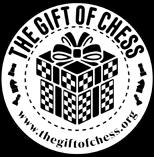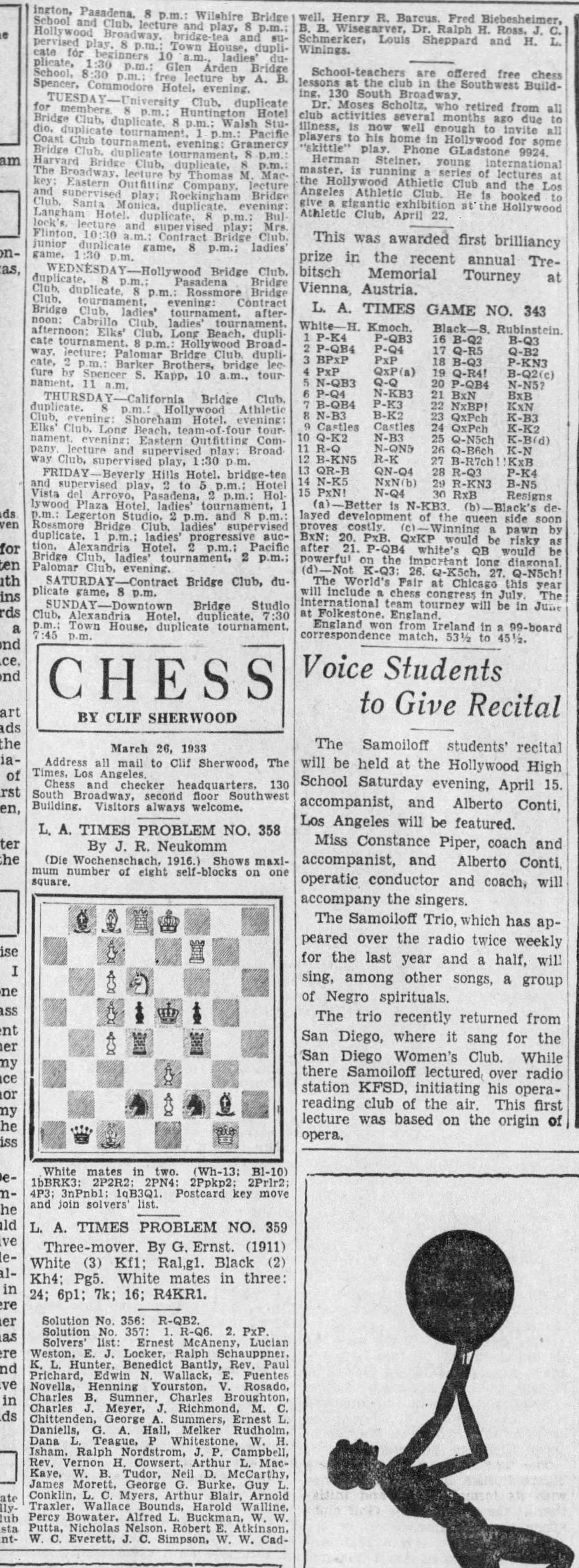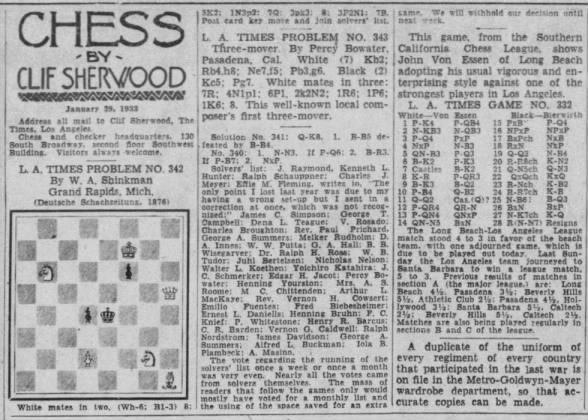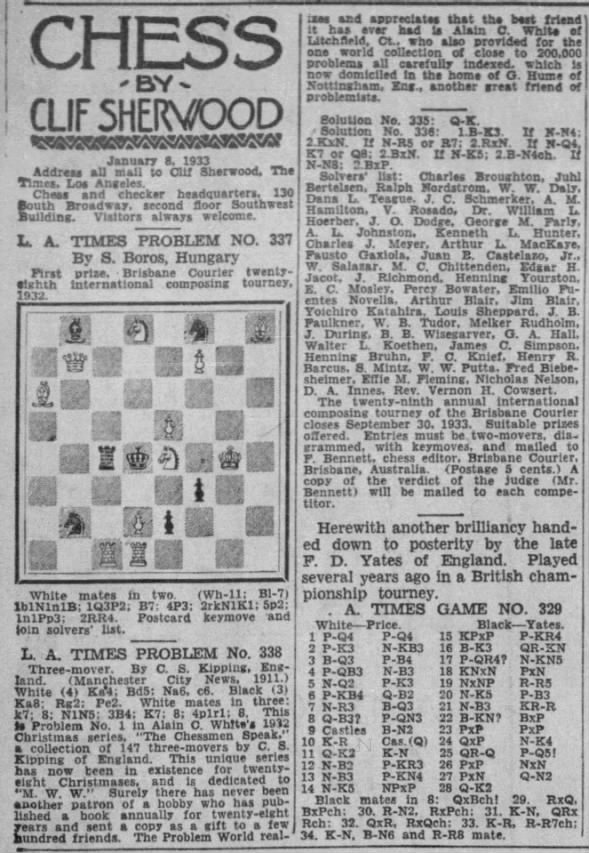< Prev
Index
Next >
The Guardian London, Greater London, England Saturday, July 01, 1972 - Page 11
Engames People Play, Chess Correspondent, Leonard Barden, sizes up the contestants and tactics on the eve of the Spassky-Fischer world championship.
IF Bobby Fischer and Boris Spassky sit down in Reykjavik tomorrow afternoon to start their 24-game series for the world chess title, it will mark a new high in public awareness of a game which has radically altered its old image of an introverted refuge for slow-moving graybeards. The column inches written on the tangled and acrimonious match negotiations (the International Chess Federation's finances “suffered very heavy blows” from the 139 telegrams set out to Moscow, New York, Belgrade and Reykjavik at a cost of nearly £1000 between January and May this year) and on Fischer's heavyweight-style training (complete with 300 lb. punchbag, skipping rope, and underwater deep breathing exercises) have already given the contest more write-ups than all the other world championship matches put together. And the players haven't pushed a pawn yet.
A gaggle of literacy alumni and forecasting chessmasters have descended on Reykjavik's single international class hotel; Arthur Koestler, Lord Snowdon, and Norman Mailer are all expected to be there, and two books which will include all the games are ready for a sprint race to publish within a few days of the final move of the match.
Fischer, of course, is a journalistic gift with his stance as a Muhammad Ali cum George Best at one moment fighting the cold war single-handed (“It is really the free world against the lying, cheating, hypocritical Soviets”) and at another casually dismissing the champion's chances with a throwaway (“this little thing with me and Spassky”). Fischer's Russophobia dates back at least to the 1962 Candidates' tournament, where he accused his five Russian opponents of cheating by arranging routine draws with each other while going full out against the non-Russians.
His claim was cooly received by fellow-professionals, for short draws are a feature of the international chess circuit, and many players use them as extra rest days in tournaments lasting several weeks. Later in 1962, Bobby claimed that the then world champion, Botvinnik, took advice from his team captain during the USA-USSR match. Nobody believed it, and even the captain of the US team declined Bobby's request to lodge a protest. Botvinnik told me after this game that Fischer had only spoken three words to him in his life. Upon being introduced, Bobby said “Fischer!”; before their game in 1962 they almost bumped heads when they sat down and Fischer said “Sorry!”; and as the game ended, Fischer said “Draw!” Bobby's suspicion of Soviets is still very live, when in their match last year, Taimanov drew the envelope allotting him the white pieces in the first game, Fischer checked the other envelope.
Yet Bobby's distrust, powerful though it is, remains subsidiary to his lifelong devotion to chess and his passion for perfect and flawless play. Fischer combines chess with the life of a well-to-do Bohemian; he has no home, no permanent address. Bobby migrates between hotels, and chooses, where possible, rooms without an outside view. A view, he says, makes concentration harder. Accompanying him where he goes is a collection of chess books and magazines in many languages, which he studies most of the day.
Unlike the Soviets, who emphasize teamwork in training, Bobby works alone with his pocket set. “No grandmaster analyses as much as Bobby” says another U.S. grandmaster, Robert Byrne. Gligoric, of Yugoslavia, describes Bobby's dedication like this. “Whenever I am in pleasant company, sipping fine rose win, or when I am playing football or watching a good film, I cannot help remembering Bobby. And I think: at this moment, just like at any other moment, he is sitting by his chessboard, completely indifferent of all pleasures that life offers to him. I have to feel pity and admiration for him. Such a fanaticism cannot be resisted even by such brilliant chessplayers as the Russians—and I believe Spassky won't resist it either.”
Reporters who caught a glimpse of Bobby at his training camp at Grossinger's wrote about a “big red book” which he carried with him constantly. The book was the German collection of Spassky's games in the Wildhagen series; since then, a complex global information service which the Russians even now probably don't know about has kept Bobby supplied with Spassky's obscure games from past Soviet championship semi-finals as well as more recent events, like last December's Alekhine Memorial.
Dedication and knowledge of book variations, particularly after his own almost invariable favourite opening: 1. P-K4, are part of the explanation of Bobby's strength. He has been eight times U.S. champion, starting at age 14; his record of 21 successive victories against world class opponents in 1970-71 will probably never be beaten unless he does so himself. To qualify for his match with Spassky, Bobby defeated Mark Taimanov, of Russia, and Bent Larsen, of Denmark, 6-0, and ex-champion Tigran Petrosian, of Russia, 6½-2½: this exceptional achievement can be judged by the statistic that at this level of top caliber chess about two-thirds of the games are normally drawn. International rating lists show Fischer not only the best of all time; the computer prediction is that he will beat Spassky 12½-8½, and Ladbrokes quote him as a 2-1 favourite. Commentators speak of “Fischer-fear” among his opponents; his three match victims in the championship eliminators notched up between them two high blood pressures and one nervous exhaustion.
There are other chess players who know a mass of opening systems and play with great ambition to win; the extras which set Bobby apart are an ability to isolate a single winning theme from a mass of complications, and a highly developed capacity for chess visualization and recall. Before Bobby came into world chess, Capablanca was the player with the greatest natural talent: Capa was simple, direct, logical, always aiming for a favourable endgame where his advantage could be driven home without unnecessary difficulties or risks. In Bobby's hands, this pure, classical style is almost a cult aiming at a special kind of chess truth. Technically, the Capa element in Fischer's style comes out in his skill in rook and bishop against rook and knight endings, a type of endgame where Spassky's technique is a little suspect. As for visualizing, Bobby is said to remember every major game he has ever played.
Even if the claim may be part of the Fischer publicity machine, there is good scientific evidence to show that natural ability in chess can be diagnosed from a single position. The Dutch experimental psychologist and chess international Adriaan de Groot, in his book, Thought and Choice in Chess, quotes the diagram above from an actual game which was shown as an unfamiliar position to chess players of various for five seconds, after which he asked them to reconstruct it from memory. Differences in chess ranking showed dramatically, as you can find by trying the test yourself.
Look at the diagram for five seconds, then try to reconstruct it on a chessboard or by noting it down. Dr. Max Euwe, former world champion, reconstructed it perfectly, and Fischer or Spassky would be able to do likewise. A lower-ranked master made one small error, but county standards, club, and average players made all kinds of mistakes and omissions. A master can perceive the position in large units, such as supporting pieces or pawn structure, and even has an impression within the five seconds of which side has the better game.
While Fischer has talked and trained as if he were already champion, Spassky has been preparing with a team of helpers who include Ewfim Geller, the Russian with the best record against Fischer apart from Spassky himself, and Nikolai Krogius, a scholarly statistical psychologist whose function seems to be mainly to give homely advice and platitudes. The third member of Spassky's group, Ivo Nei, is an openings expert who specializes in queen's pawn openings — the minority who forecast Spassky to keep his title reckon that Fischer won't have a good defence if Spassky opens 1. P-K4.
Boris Spassky, 35 and world champion since he beat Petrosian in 1969, is six years older than Fischer but still within the prime of life period for a chess master which runs from the late twenties to the middle thirties (younger players have not yet developed the experience and stability for consistently good top level results, while older grandmasters get tired in the final phase of the stamina-testing five-hour session which is universal in international contests). Spassky's role as the last line of defence of Soviet chess hegemony against Fischer has brought him at least one incidental benefit in a flat on the fifth floor of Moscow's newest and largest apartment building, where he lives with his wife and their five-year-old son. “All my family consider we owe Bobby a big barrel of vodka. Thanks to him, we have a good apartment for the first time,” said Boris in a recent interview.
Spassky, the self-confessed “lazy Russian bear” has prepared harder for this match than for any other chess event in his life. Whether the preparations will offset his mediocre form of the past two years is an open question. One fellow chess master has claimed that Boris unconsciously wants to lose the match, and in a recent interview he said that he would feel happier when he was no longer champion. Though the champion keeps the title if the match is drawn 12-12, Spassky regards this as a handicap for himself: “that rule lures the champion towards cautious tactics with the motto not to lose the game; and such tactics can be terribly dangerous.”
Spassky has the burden of defending not only the title itself but the whole Soviet chess hegemony of the past 25 years. The paradox is that Spassky, though a hero of the chess public and Sovietsky Sport's Sportsman of the Year in 1969, has a background of conflict with chess officials and was reportedly openly critical of the invasion of Czechoslovakia. During his youth he was three times banned from playing abroad for a period, and revealed in a recent interview that he would have liked to have settled the details of the match with Fischer personally at the Amsterdam meeting in January: “I wanted to go there, but I was not met with understanding by our officials. I just could not persuade them that my personal meeting with Fischer was necessary.”
How will the match go and who will win? On results and ratings, there is only one player in it—Fischer. There are just three factors which give Spassky a chance of keeping his title. First is his excellent personal record against Fischer of 4-1, which has been achieved by clever psychological chess, steering the game by pawn sacrifices into just the unclear situations without positional landmarks which Fischer dislikes. “Yeah, Spassky used to defeat me, but those were awfully bad games,” said Bobby to an interviewer.
Secondly, there is the technical factor that the defences which Fischer relies upon against the queen's pawn—the Grunfeld, King's Indian, and Benoni—all have some theoretical doubts attached to them at the moment. If Spassky can blunt Fischer's attacks when the American is White and can himself score well with 1. P-Q4, then he's in business.
Finally, Fischer's supporters will fear most of all that Bobby's self-destructive streak which has produced walkouts from major world events will produce the first default in a world championship. Bobby has criticized the choice of Iceland for the match as “primitive” and has complained that he will be spied on by the Russians and badgered by the press if he stays in the best hotel.
If Bobby finds himself two or three games down, there is a risk that the match will end prematurely. On balance, however, I expect Fischer to win comfortably, though not overwhelmingly, with a final margin between 12½-9½ and 12½-6½.
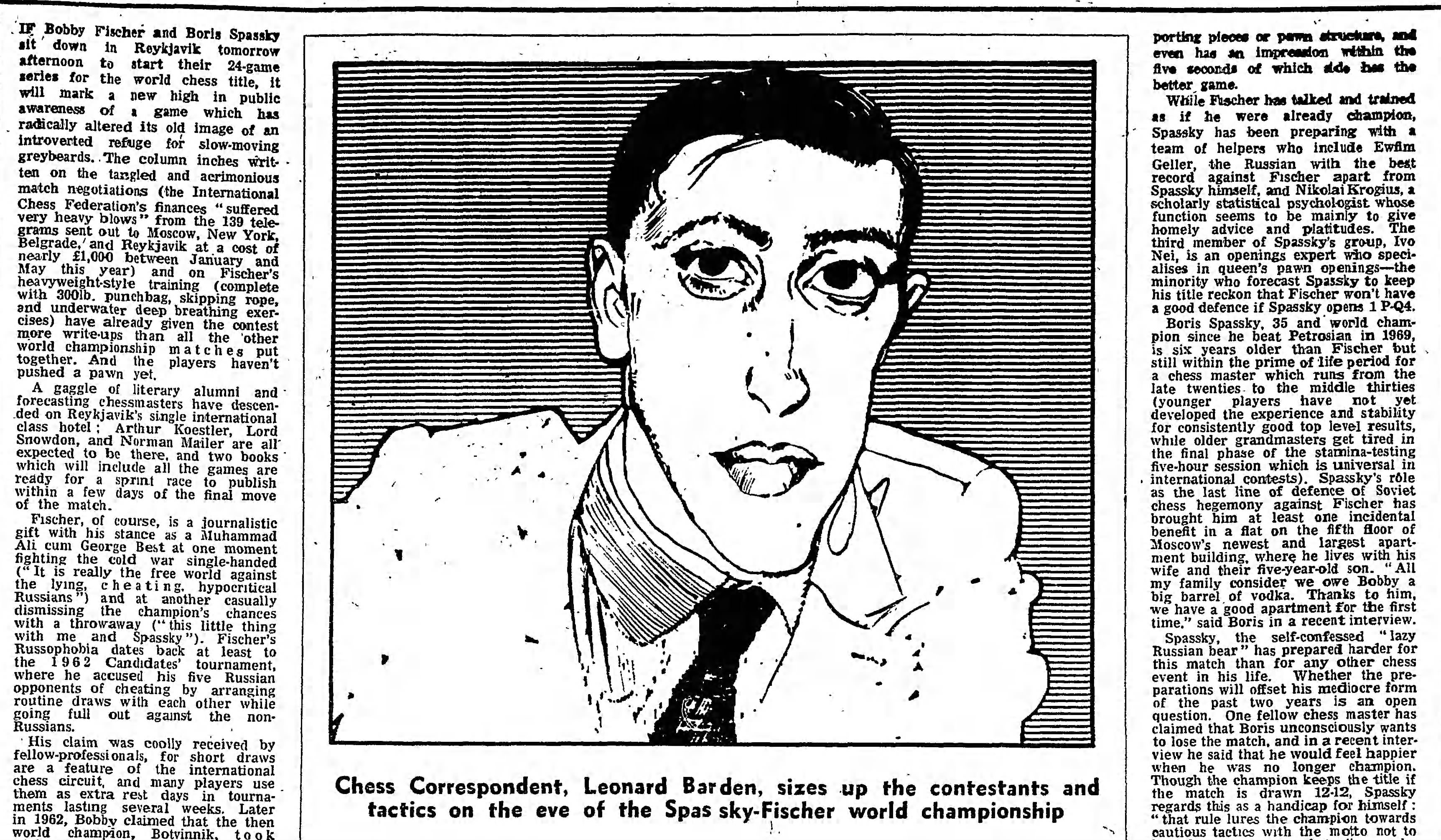
 Engames People Play 01 Jul 1972, Sat The Guardian (London, Greater London, England) Newspapers.com
Engames People Play 01 Jul 1972, Sat The Guardian (London, Greater London, England) Newspapers.com
 Chess by Clif Sherwood 07 May 1933, Sun The Los Angeles Times (Los Angeles, California) Newspapers.com
Chess by Clif Sherwood 07 May 1933, Sun The Los Angeles Times (Los Angeles, California) Newspapers.com


